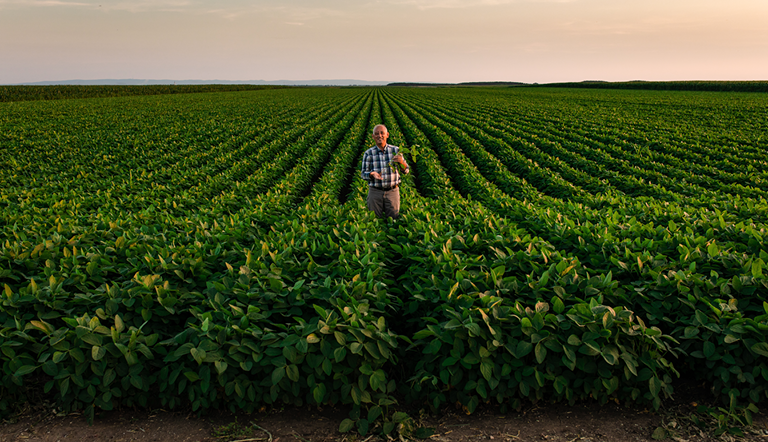South Africa’s 2025 summer grain production outlook has received another boost, thanks to favourable rainfall and strong planting momentum. The Crop Estimates Committee’s (CEC) latest forecast reveals a robust recovery in maize and soya bean yields, while winter grain plantings remain largely steady year-on-year with slight adjustments across key crops.
Summer Crops: Solid Gains Across the Board
South Africa’s commercial maize crop is now expected to reach 15.03 million tons, up 1.68% from the previous estimate and nearly 17% higher than the 2024 harvest.
-
White maize is forecast at 7.7 million tons (avg. yield: 4.84 t/ha)
-
Yellow maize at 7.3 million tons (avg. yield: 7.32 t/ha)
In the non-commercial sector, maize plantings increased by 3.17% to 358,000 hectares, with an expected yield of 621,500 tons, up 8% year-on-year. White maize production in this sector is forecast to rise 7.9% to 439,700 tons, while yellow maize output is projected to increase by 8.5% to 181,800 tons.
Soya bean production received a significant upward revision of 2.82% to 2.72 million tons, representing a staggering 47% increase from the previous season’s 1.84 million tons.
Other summer crop highlights:
-
Sorghum and dry beans saw no forecast changes, but remained 41% and 47% higher year-on-year, respectively
-
Sunflower seed output was revised down by 2.68% to 708,300 tons, but still sits 12% above last year’s total
-
Groundnut production dipped 3.34% to 61,389 tons, though it remains 18% higher than 2024 levels
Winter Grains: Slight Adjustments, Stable Momentum
The winter grain planting outlook was revised slightly downward, with total area planted adjusted from 827,970 ha to 824,120 ha — just 0.7% below last season’s 818,750 ha.
Breakdown of revised plantings:
-
Wheat: 512,500 ha (up 1.4% from 2024)
-
Canola: 164,900 ha (down 0.5%)
-
Oats: 33,520 ha (still 8.1% higher y/y)
-
Sweet lupines: 17,500 ha (up 9.4% y/y)
-
Barley: 95,700 ha (up from the initial estimate, but 5% below 2024)
Farmer Sentiment: Cautious Optimism, Persistent Financial Strain
Wandile Sihlobo, Chief Economist at Agbiz, attributed the positive summer crop outlook to favourable rainfall and decent planting conditions. “This will likely exert downward pressure on grain prices, which is a welcome relief for consumers amid inflation concerns,” he noted. However, he flagged white maize quality issues in some regions as a concern.
Grain SA Chairperson Richard Krige said most production regions have received sufficient early moisture, giving farmers a strong start. “The season looks promising, but timely rain remains critical for achieving good yields,” he emphasized.
Krige also highlighted economic pressure on producers:
“Input costs have more than doubled in recent years, while grain prices have remained relatively flat. Many farmers are struggling to break even—especially when yields or quality are compromised.”
On barley, Krige noted a drop in plantings due to late premium offers and quality challenges from the previous season. “More predictable pricing and earlier incentives are needed to encourage barley planting,” he added.
Krige estimated that wheat prices would need to rise by R600–R1,000 per ton for production to be consistently profitable.
Key Takeaway
While South Africa’s 2025 grain and oilseed sector appears to be on a strong recovery trajectory, the financial sustainability of farming remains precarious. Favourable weather has supported yield growth, but market volatility, rising costs, and input accessibility continue to challenge long-term viability—highlighting the need for strategic policy support and market reform.


